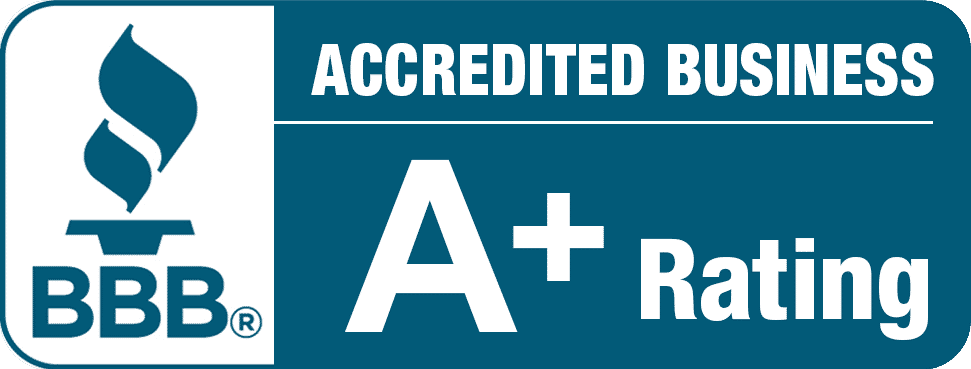Your HVAC system’s rating can tell you a lot about your heating and cooling unit. However, most Milton, WI residents don’t understand HVAC system ratings or their importance. Therefore, the HVAC specialists at Rock Valley Services put together a brief guide to teach you about HVAC system ratings and what they tell you about your unit.
Rock Valley Services is one of Milton, WI’s most trusted heating and cooling companies. Our team has nearly two decades of industry experience, qualifying us for all your HVAC needs. Whether you need routine maintenance or a complete air conditioning overhaul, get your HVAC services in Milton from Rock Valley HVAC.
Read on to learn more about HVAC system ratings and what they can tell you about your HVAC.
What Is an HVAC System Rating?
Every air conditioner, heater, and heat pump has a system rating listed somewhere on the unit. The rating tells potential buyers about the system’s performance, operating costs, and more to help them determine if the unit is right for their home. The higher the system rating, the better the system.
However, heating and cooling systems with higher ratings often demand higher prices. Although most homeowners want the best air conditioner and heater currently available, sometimes high-efficiency units are out of their price range.
While units with high system ratings sport a higher price tag, they can help you save money over time. Highly efficient units don’t require as much energy to function optimally, thus lowering your monthly energy expenses. It’s best to find a system with a high-efficiency rating that’s within your financial means.
Understanding HVAC System Ratings
Heating and cooling systems have different ratings depending on the unit type. Air conditioners, heaters, and heat pumps have unique system ratings that apply to those specific devices. For example, AC units utilize SEER ratings while furnaces have an AFUE rating.
Below are some of the most common HVAC system ratings.
AFUE
The Annual Fuel Utilization Efficiency rating (AFUE) tells you the performance level of a fuel furnace. It measures the furnace’s fuel use and its fuel-to-heat conversion percentage. If your furnace has a 75 AFUE rating, it utilizes 75% of the supplied fuel, releasing the remaining 25% through its exhaust.
The AFUE ratings range from 30 to 100. However, new systems must have at least a 78 AFUE score to meet the federal minimum standard.
Although gas furnaces aren’t as expensive as electrical systems, they rarely have better AFUE ratings. High-end electric units are the only furnaces to reach a 100 AFUE score. Keep this in mind before committing to a specific furnace type.
HSPF
Heat pumps utilize HSPF ratings to determine the system’s efficiency. HSPF stands for Heat Season Performance Factor. Manufacturers establish a heat pump’s HSPF rating by dividing the unit’s total heat output by its energy consumption in watt-hours.
High-performing heat pumps have higher HSPF ratings and typically consume less energy. All heat pumps created after 2005 have a 7.7 HSPF rating or higher, making older models obsolete. If your heat pump is 15 or more years old, consider upgrading to a more efficient system.
Some modern heat pumps reach 10 HSPF, but as long as the unit has a 7.7 HSPF or higher, it should adequately heat your home.
SEER
SEER stands for Seasonal Energy Efficiency Ratio and measures all air conditioners and heat pumps’ cooling efficiency.
Heat pumps carry both a SEER and HSPF rating since they function as an all-in-one heating and cooling system. The heat pump’s SEER rating informs homeowners how much energy the unit requires to extract warm air from a room.
An air conditioning system’s SEER rating displays the unit’s required electrical input over an average season. In short, the higher the SEER rating, the better the AC unit. All modern heat pumps and AC systems have a 13 SEER rating or higher.
Homes in hot, tropical climates require systems with higher SEER ratings than those in colder areas. An Arizona resident might need an air conditioner with a 21 SEER rating, while someone in North Dakota might want to consider a less efficient system.
MERV
MERV, also known as Minimum Efficiency Reporting Value, rates a central AC unit’s filter performance. The MERV scale varies from 1 to 16, 1 indicating the lowest efficiency and 16 representing the highest. Filters with higher MERV ratings catch more pollutants during the filtration process, providing you with cleaner indoor air.
People with severe seasonal allergies benefit tremendously from filters with high MERV ratings since they catch more pollen, dust, and other contaminants that heighten allergy symptoms. They also improve your home’s indoor air quality, keeping your residence’s air clean and healthy.
You don’t have to purchase a high-efficiency AC system to enjoy the benefits of quality MERV ratings. Many air conditioners allow you to replace your old filer with an upgraded model with a higher MERV rating.
Although filters with high MERV ratings improve your home’s indoor air quality, they require your cooling system to work harder. Some even compromise your air conditioner’s efficiency level due to the strain required to push air through the filter.
Seek air conditioning filters with a MERV rating between 6 and 13 next time you need a replacement. These filters clean the air efficiently without putting excess strain on your AC system.
EER
Many people believe SEER and EER ratings mean the same thing. While both measure an HVAC system’s energy efficiency, there are slight differences that distinguish the ratings for one another.
EER stands for Energy Efficiency Ratio and measures the unit’s energy efficiency at a specific operating temperature. SEER calculates the system’s energy productivity during the entire cooling season at fluctuating temperatures. In short, SEER shows how different temperatures affect the EER rating.
Manufacturers establish an air conditioner’s EER rating by dividing the system’s input electrical power by the quantity of cool air created under a specific range of conditions. They set the outdoor temperature to 95 degrees, the indoor climate to 80 degrees, and the humidity at 50% and run tests to create the EER rating.
Although both SEER and EER ratings provide vital information to potential buyers, you want to pay more attention to the SEER rating since it measures long-term energy consumption.
Government Requirements
In 1992, The US government created federal minimums for AC efficiency. It required all HVAC units to have a 10 SEER rating or higher. The government raised the qualifications to 13 SEER in 2006 and 14 SEER in 2015.
However, the 2015 requirements exclude split-system AC units in most states. Below are a few states that require spit-systems to have at least a 14 SEER rating.
- Alabama
- Arkansas
- Delaware
- Florida
- Georgia
- Hawaii
- Kentucky
- Louisiana
- Maryland
- Mississippi
- North Carolina
- South Carolina
- Tennessee
- Texas
- Virginia
You’re beholding an energy-efficient system if you spot an Energy Star logo on an HVAC unit’s packaging,
Contact Rock Valley HVAC for Professional Heating and Cooling Services in Milton, WI
Rock Valley HVAC is Milton’s number one choice for professional HVAC services. We can have your HVAC system running better than ever without tripping up your finances. Our team’s commitment to exceptional HVAC servicing is as strong as our dedication to outstanding customer care, ensuring you receive top-notch service every time you invite us into your home.
Whether you want to learn the differences between HVAC and AC units or just need more information about HVAC system ratings, the Rock Valley team is here for you.
Contact Rock Valley Services at (608) 247-4949 today!



